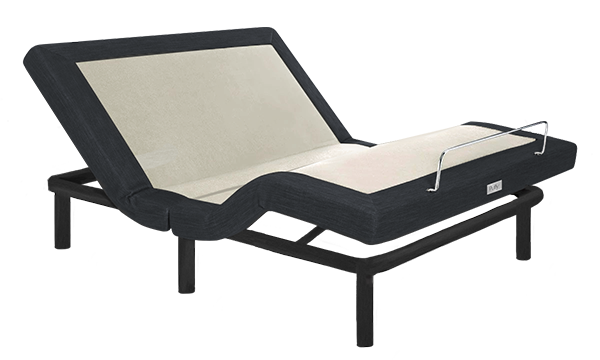Adjustable beds have transformed the way we think about sleep, offering personalized comfort that caters to our unique needs. But with this innovation comes the question: what is the best angle for sleeping on an adjustable bed? This guide delves into finding your perfect sleep angle for maximum comfort and health benefits.
Adjustable Bed Angle
Understanding the right adjustable bed angle is crucial for maximizing the benefits of your adjustable bed. The perfect angle can vary based on individual health conditions, personal comfort preferences, and the activities you do in bed, such as reading, watching TV, or sleeping.
The Importance of Finding Your Ideal Angle
- Health Optimization: Certain angles can improve circulation, alleviate back pain, reduce snoring, and help with conditions like acid reflux.
- Comfort Enhancement: Adjusting the bed to fit the natural curvature of your spine supports a more comfortable and restful sleep.
Common Adjustable Bed Angles and Their Benefits
- Slight Incline (15-30 degrees): Often recommended for reducing snoring and relieving symptoms of sleep apnea.
- Elevated Legs: Raising the legs slightly above the heart can improve circulation and reduce swelling.
- Zero Gravity Position: Mimics the weightlessness of space, distributing weight evenly across the bed to relieve pressure points.
Pairing your adjustable bed with a Puffy Lux Mattress can elevate the comfort and effectiveness of your chosen angle, ensuring a night of restful sleep.
Interested in how Puffy stacks up against other brands? Check out our mattress comparisons: Puffy vs Purple, Puffy vs Nectar, Puffy vs Casper, Puffy vs Leesa, Puffy vs Saatva, Puffy vs DreamCloud, and Puffy vs Tuft and Needle.
How to Measure the Angle on an Adjustable Bed
Measuring the angle on an adjustable bed accurately is key to tailoring your sleep experience to your needs. Here’s how you can measure the angle on your adjustable bed for optimal comfort and health benefits.
Tools You’ll Need
- Digital Inclinometer: A precise tool for measuring angles.
- Smartphone Apps: Many smartphones have built-in inclinometers or apps available for download that can measure angles accurately.
Step-by-Step Guide to Measuring Your Bed Angle
- Select Your Measurement Tool: Choose either a digital inclinometer or a smartphone app that you find easy to use.
- Place the Tool on the Mattress: Position your chosen tool on the mattress where it meets the adjustable base to get an accurate reading of the incline.
- Adjust the Bed: Slowly adjust your bed to your preferred angle, watching the tool’s reading change as you go.
- Record the Angle: Once you’ve found a comfortable angle, note it down. This will be your reference point for setting your bed in the future.
Tips for Finding Your Ideal Sleep Position
- Experiment: Start with recommended angles for your needs but don’t be afraid to adjust slightly to find what truly feels best for you.
- Adjust Gradually: If you’re new to using an adjustable bed, begin with minor adjustments to allow your body to adapt.
Check out Puffy mattress reviews from real customers and see how we compare with other brands.
Optimal Sleeping Angles for Specific Needs
Adjustable beds offer the unique advantage of customizing your sleeping position to address specific health needs and improve overall comfort. Here’s a closer look at optimal sleeping angles for various requirements:
For Back Pain Relief
- Recommended Angle: Elevating the head and feet to create a slight bend at the hips and knees can alleviate pressure on the back. An angle of 30-45 degrees for the head and 30-45 degrees for the knees is often beneficial.
- Rationale: This position helps to reduce the strain on the spine by promoting natural alignment and distributing weight evenly.
For Snoring and Sleep Apnea
- Recommended Angle: Elevating the head between 10-30 degrees can help keep airways open, reducing snoring and improving symptoms of sleep apnea.
- Rationale: The elevation helps prevent the tongue and soft tissues in the throat from collapsing back into the airways, which can obstruct breathing.
For Acid Reflux (GERD)
- Recommended Angle: A head elevation of 15-30 degrees minimizes acid reflux by preventing stomach acids from traveling back into the esophagus.
- Rationale: Gravity assists in keeping stomach contents down, reducing the frequency and severity of acid reflux episodes.
For Improved Circulation
- Recommended Angle: Elevating the legs slightly above the heart level can enhance blood flow and reduce swelling in the lower limbs.
- Rationale: This position aids in venous return, decreasing leg swelling and improving overall circulation.
Combining the precise angle adjustment of an adjustable bed with the adaptive comfort of a Puffy Lux Mattress creates an ideal sleep environment that supports restful nights and energized mornings.
Use our store locator to find the closest furniture or mattress store near you and feel the cloudlike comfort of our Puffy Mattress in person.
Conclusion
Finding the best angle for sleeping on an adjustable bed is a personal journey that can significantly enhance your sleep quality and overall health.
By understanding the benefits of adjustable bed angles and how to find your ideal position, you can turn your bedroom into a sanctuary of rest and rejuvenation.

- Zero gravity elevation.
- Designed for all mattresses.
- Lifetime warranty.
- 101-night sleep trial.
- Free shipping and returns.












